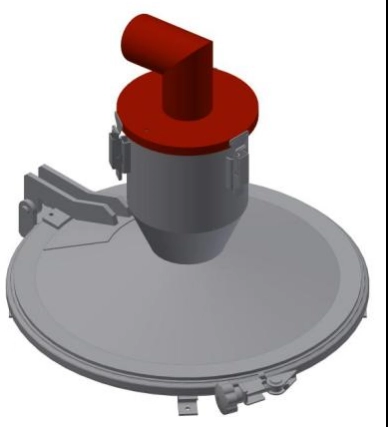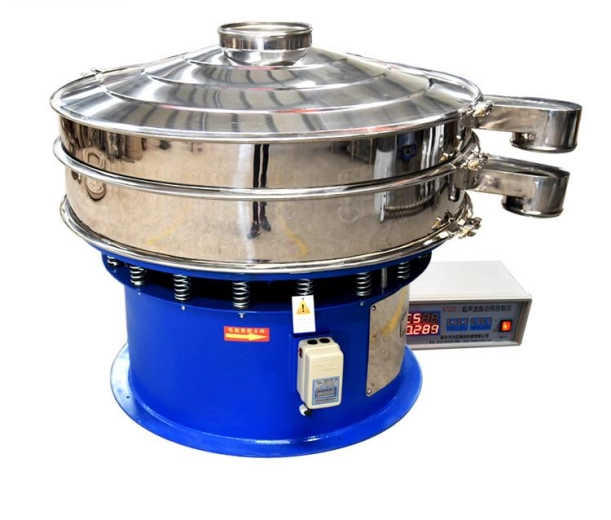Content Menu
● Table of Contents
● Understanding the Powder Coating Process
● What Is Powder Sieving and Why Does It Matter?
● Overview of Powder Sieve
>> How Powder Sieves Work
>> Key Advantages of Powder Sieves
>> Typical Use Cases for Powder Sieves
● Overview of Vibrating Sieve
>> How Vibrating Sieves Work
>> Key Advantages of Vibrating Sieves
>> Typical Use Cases for Vibrating Sieves
● Comparison: Powder Sieve vs Vibrating Sieve
>> Performance & Efficiency
>> Product Quality
>> Maintenance & Cleaning
>> Cost Considerations
>> Versatility & Limitations
● How to Choose the Right Sieve for Your Powder Coating Process
>> 1. Powder Type and Sensitivity
>> 2. Required Throughput
>> 3. Desired Particle Size Distribution
>> 4. Operational Flexibility
>> 5. Budget Considerations
>> 6. Integration and Automation
>> 7. Maintenance and Cleanliness
● Frequently Asked Questions
>> Q1: Why is sieving powder important before powder coating?
>> Q2: Can vibrating sieves screen ultra-fine powders for high-gloss finishes?
>> Q3: How do I choose the correct mesh size for powder sieving in coating applications?
>> Q4: Is maintenance more demanding on vibrating sieves compared to powder sieves?
>> Q5: Which is more cost-effective—powder sieve or vibrating sieve?
>> Q6: Are both sieve types suitable for automated powder recovery systems?
Powder coating is a widely adopted finishing method, celebrated for its durability, environmental friendliness, and stunning visual appeal. However, the success of powder coating hinges on the quality and uniformity of the powder itself. This makes the sieving step essential—acting as the gatekeeper to both powder purity and consistent particle size. Two of the most prominent technologies used for powder screening are the powder sieve (typically a rotary or cyclone design) and the vibrating sieve (also called a vibratory screener or vibrating sifter). Choosing the optimal solution is crucial for efficiency, product quality, and operational cost.
This article offers an in-depth exploration of these two technologies in the context of powder coating, examining their operating principles, benefits, drawbacks, applications, and selection criteria. By the end, you'll understand which sieve solution will best suit your powder coating process.

Table of Contents
1. [Understanding the Powder Coating Process](#understanding-the-powder-coating-process)
2. [What Is Powder Sieving and Why Does It Matter?](#what-is-powder-sieving-and-why-does-it-matter)
3. [Overview of Powder Sieve](#overview-of-powder-sieve)
- 3.1 [How Powder Sieves Work](#how-powder-sieves-work)
- 3.2 [Key Advantages of Powder Sieves](#key-advantages-of-powder-sieves)
- 3.3 [Typical Use Cases for Powder Sieves](#typical-use-cases-for-powder-sieves)
4. [Overview of Vibrating Sieve](#overview-of-vibrating-sieve)
- 4.1 [How Vibrating Sieves Work](#how-vibrating-sieves-work)
- 4.2 [Key Advantages of Vibrating Sieves](#key-advantages-of-vibrating-sieves)
- 4.3 [Typical Use Cases for Vibrating Sieves](#typical-use-cases-for-vibrating-sieves)
5. [Comparison: Powder Sieve vs Vibrating Sieve](#comparison-powder-sieve-vs-vibrating-sieve)
- 5.1 [Performance & Efficiency](#performance-efficiency)
- 5.2 [Product Quality](#product-quality)
- 5.3 [Maintenance & Cleaning](#maintenance-cleaning)
- 5.4 [Cost Considerations](#cost-considerations)
- 5.5 [Versatility & Limitations](#versatility-limitations)
6. [How to Choose the Right Sieve for Your Powder Coating Process](#how-to-choose-the-right-sieve-for-your-powder-coating-process)
7. [Frequently Asked Questions](#frequently-asked-questions)
8. [Word Count](#word-count)
9. [Article Summary](#article-summary)
Understanding the Powder Coating Process
Powder coating involves applying a dry, fine powder—often a blend of resins, pigments, and additives—to a substrate. The powder particles adhere to the electrically charged surface before being cured under heat, resulting in a hard, seamless, and attractive finish.
A critical factor for flawless results is ensuring the powder is free from contaminants, agglomerates, and particles outside the target size distribution. Sieving is essential both at the manufacturing stage and during on-site reclaim/recycling to maintain coating consistency.
What Is Powder Sieving and Why Does It Matter?
Powder sieving is the process of separating powder particles by size using a mesh screen, eliminating foreign materials, oversized clumps, and fine dust. The primary goals are:
- Ensuring Uniform Particle Size Distribution: Uniform powders yield a smooth, consistent coating.
- Eliminating Contaminants and Agglomerates: Foreign materials and clumps are removed, preventing clogs and finish defects.
- Improving Flowability and Application Consistency: Properly sized powder flows evenly through application guns, reducing downtime.
- Reducing Equipment Downtime: By screening out unwanted particles, equipment blockages are minimized, leading to greater process efficiency.
Overview of Powder Sieve
Powder sieves typically operate using a rotary or centrifugal mechanism, often referred to as cyclone sievers in the powder coating industry.
How Powder Sieves Work
- Rotary/Centrifugal Action: Rotating paddles or blades propel powder against a stationary mesh. Particles small enough to pass through the mesh are collected for further use.
- Agglomerate Disintegration: The rotary action breaks up soft clumps, while heavy contaminants and unbroken agglomerates are discharged separately.
- Continuous Operation: Many setups allow for continuous feeding, ideal for integration into automated powder recovery lines.
Key Advantages of Powder Sieves
- Excellent at Removing Agglomerates: Rotary action is particularly effective at breaking apart soft clumps.
- Gentle Handling: Suitable for powders sensitive to degradation or frictional heat.
- Consistent Performance With Bulk Powders: Especially useful when screening large quantities with minimal variation.
- Low Power Consumption: Rotary sieves tend to use less power per ton compared to vibration-based solutions.
Typical Use Cases for Powder Sieves
- Pre-spraying Screening: Ensures only powder of the right particle size reaches the coating gun.
- Powder Recovery and Recycling: Used in closed-loop systems to filter reclaimed powder before reuse.
- Removing Agglomerates After Production: Screens powder before packaging or shipping to customers.
Overview of Vibrating Sieve
Vibrating sieves, also known as vibrating screeners or vibratory sifters, use mechanical agitation to separate powders according to size.
How Vibrating Sieves Work
- Vibratory Motor-Driven: A motor induces rapid, controlled vibrations to a mesh surface.
- Multi-Layer Capabilities: Multiple mesh layers can be used to separate particles into several size fractions in one go.
- Adjustable Amplitude and Frequency: Operators can tune vibration speed and force for different materials or processing requirements.
Key Advantages of Vibrating Sieves
- High Throughput and Efficiency: The intense vibration increases screening rates and enables processing of larger powder volumes.
- Less Prone to Clogging: Vibration helps minimize mesh blinding, especially important with fine or sticky powders.
- Precision and Flexibility: Capable of separating powders down to very fine sizes (as fine as 5 microns) for high-specification work.
- Versatile: Suitable for a wide range of materials—including powders, granules, and even liquids.
- Reduced Labor Requirements: Heavy automation means less manual monitoring and cleaning.
Typical Use Cases for Vibrating Sieves
- Large-Scale Powder Recovery: Rapidly screening reclaimed powder, sorting it efficiently into usable and waste fractions.
- Multi-Stage Particle Classification: Sorting powders into different grades for various applications.
- Integration With Fast-Moving Lines: Where high throughput and speed are a must, vibrating sieves can keep up with production lines.
Comparison: Powder Sieve vs Vibrating Sieve
To help identify the best option for your powder coating process, let's compare the key features and performance characteristics.
Performance & Efficiency
| Feature | Powder Sieve | Vibrating Sieve |
| Throughput | Medium to high (depends on design) | High (excellent for large volumes) |
| Screening Speed | Moderate | Fast (vibration accelerates process) |
| Mesh Size Range | Standard, typically coarser | Very fine to coarse (5 microns to 100mm) |
Vibrating sieves generally offer greater speed and flexibility for handling fine powders and higher volumes.
Product Quality
| Factor | Powder Sieve | Vibrating Sieve |
| Agglomerate Removal | Good; rotary motion breaks up clumps | Excellent; vibration and mesh blinding reduction make them ideal for powder recovery/recycling |
| Consistency | Reliable for standard powders | Very high, especially for demanding specs |
Both types will yield uniform powder when operated correctly, but vibrating sieves often win out for ultra-fine or multi-grade product quality requirements.
Maintenance & Cleaning
- Powder Sieve: Fewer moving parts, straightforward maintenance, easy mesh access. Less frequent mesh replacement might be needed if clumps are hard.
- Vibrating Sieve: May require more frequent cleaning, especially if handling sticky powders, but modern designs offer quick-change meshes and easy cleanout for minimal downtime.
Cost Considerations
| Expense Type | Powder Sieve | Vibrating Sieve |
| Initial Investment | Typically lower | Moderate to higher (depends on features) |
| Operating Costs | Lower power use, minimal labor | Efficient at scale, less labor-intensive |
| Maintenance | Simple, low-cost | Slightly higher; mesh and parts wear due to vibration |
For small operations with moderate powder reclaim or screening needs, the powder sieve may offer sufficient value. High-volume or multi-grade operations benefit from the efficiency of vibrating sieves, which can offset the higher upfront costs.
Versatility & Limitations
Vibrating sieves can handle a broader range of meshes, accommodate multiple product grades, and are highly customizable. Powder sieves, while robust and gentle, are somewhat less versatile if multiple particle size distributions are required.
How to Choose the Right Sieve for Your Powder Coating Process
Consider these factors when deciding between a powder sieve and a vibrating sieve:
1. Powder Type and Sensitivity
- Sensitive powders or those susceptible to heat/friction may fare better in a gentle rotary powder sieve.
- Highly uniform, free-flowing powders can be processed efficiently by either.
2. Required Throughput
- Large-scale, fast-moving production lines benefit from vibrating sieves.
- Medium or small batch processes may find powder sieves sufficient and more economical.
3. Desired Particle Size Distribution
- For ultra-fine, multi-fraction separations or when reclaiming powder, vibrating sieves excel.
- Standard grade screening is effective with powder sieves.
4. Operational Flexibility
- Changing mesh sizes or handling multiple powders? Vibrating sieves offer quicker mesh swaps and greater customizability.
5. Budget Considerations
- Initial capital outlay and long-term operational costs must be weighed. Vibrating sieves typically require a higher investment but yield greater productivity at scale.
6. Integration and Automation
- Integrating into fully automated powder recovery loops? Both can be automated, but vibrating sieves are preferred for their compatibility and efficiency.
7. Maintenance and Cleanliness
- If hygiene and rapid cleanout are prioritized (such as in food or pharma), look for modern designs in either category that offer tool-free mesh replacement and easy access for cleaning.
Frequently Asked Questions
Q1: Why is sieving powder important before powder coating?
A: Sieving is crucial to remove oversized particles, agglomerates, and contaminants that can negatively affect surface smoothness, reduce product quality, and cause equipment blockages in the powder coating process.
Q2: Can vibrating sieves screen ultra-fine powders for high-gloss finishes?
A: Yes. Vibrating sieves are particularly adept at processing fine powders, ensuring a consistent particle size necessary for flawless, high-gloss powder coatings.
Q3: How do I choose the correct mesh size for powder sieving in coating applications?
A: Start with a mesh that corresponds to your required finish smoothness (e.g., 125 microns for many powder coatings). Finer meshes yield smoother finishes but reduce throughput. Adjust based on your quality and production needs.
Q4: Is maintenance more demanding on vibrating sieves compared to powder sieves?
A: Vibrating sieves may require more frequent mesh changes and inspections due to vibration-induced wear. However, modern vibrating sieves offer easy-access designs for rapid maintenance and cleaning.
Q5: Which is more cost-effective—powder sieve or vibrating sieve?
A: Powder sieves usually have a lower initial cost and are adequate for smaller-scale operations. Vibrating sieves, though more expensive upfront, become cost-effective for large-scale or high-reclaim operations due to their efficiency and lower labor costs.
Q6: Are both sieve types suitable for automated powder recovery systems?
A: Yes. Both powder and vibrating sieves can be integrated into automated systems. However, vibrating sieves are often favored for their higher throughput and adaptability to continuous operations.

[1] https://vibrascreener.com/top-benefits-of-industrial-vibrating-sifters-in-food-powder-processing/
[2] https://www.pfonline.com/articles/proper-sieve-size-for-powder-coatings-smooth-results
[3] https://kindle-tech.com/faqs/why-do-we-need-to-sieve-the-powder
[4] https://www.zenithcrusher.com/en/news/market/1427.html
[5] https://azoasia.com/applications/powder-coating-screening-recovery/index.html
[6] https://www.dahanmachine.com/product-center/VIBRATING-SIEVE.html
[7] https://elcanindustries.com/blog_posts/powder-coating-sieves-what-are-the-pros-and-cons-heres-what-you-need-to-know/
[8] https://bulkinside.com/bulk-solids-handling/screening-separation/optimizing-particle-size-distribution-through-powder-sieving/
[9] https://aeiscreens.com/news/the-benefits-of-vibratory-screens/
[10] https://sundialpowdercoating.com/essentials-of-silk-screening-powder-coating-a-beginners-guide-to-techniques-materials-and-application/
[11] https://www.palamaticprocess.com/blog/centrifugal-sieve-or-vibrating-sieve-which-one-to-choose
[12] https://www.gemapowdercoating.com/fileadmin/documents/Learn_More/Sieving_solutions_169.pdf
[13] https://www.palamaticprocess.com/en-us/blog/sieving
[14] https://www.goughengineering.com/en/articles/why-are-vibrating-sieves-so-important-to-the-food-snacks-and-confectionery-industry
[15] https://www.azo-inc.com/blog/screening-powder-paint
[16] https://blog.praterindustries.com/sieving-techniques-industrial-sieves-vs.-rotary-sifters
[17] https://www.specialchem.com/coatings/guide/tests-and-standards-to-characterize-powder-coatings
[18] https://www.powdergun.com/PDFs_cat/StandAloneSiever.pdf
[19] https://carriervibrating.com/resources/blog/the-benefits-and-multiple-uses-of-screeners/
[20] https://www.tiger-coatings.com/us-en/blog/powder-coating-process
Hot Tags: China, Global, OEM, private label, manufacturers, factory, suppliers, manufacturing company










































 .
. 